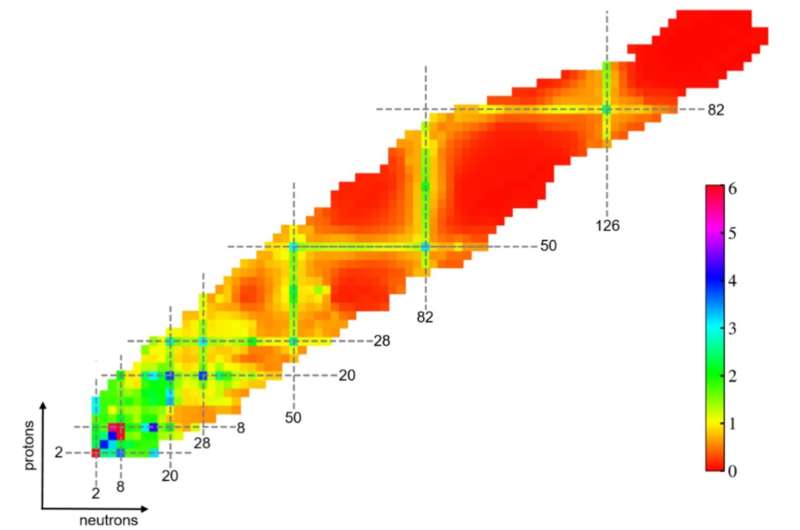
September 18, 2024 by Liu Jia, Chinese Academy of Sciences
Collected at: https://phys.org/news/2024-09-physicists-reveal-evolution-shell-machine.html
A research team has used a machine learning approach to investigate the evolution of shell structure for nuclei far from the stability valley. The study, published in Physics Letters B and conducted by researchers from the Institute of Modern Physics (IMP) of the Chinese Academy of Sciences, Huzhou University, and the University of Paris-Saclay, reveals the double-magic nature of tin-100 and the disappearance of the magic number 20 in oxygen-28.
The atomic nucleus is composed of protons and neutrons. In the 1930s, scientists discovered that nuclei exhibit relatively stable properties when the number of protons or neutrons is 2, 8, 20, 28, 50, 82, or 126. These numbers are known as “magic numbers.” The discovery of magic numbers is regarded as direct evidence of the shell structure of atomic nuclei.
However, scientists have gradually realized that the magic numbers may not be immutable. “In nuclei far from the stability line, do traditional magic numbers still exist? Are there new magic numbers emerging?
The answers to these questions may directly affect our understanding of atomic nuclei and even relate to new physics phenomena,” said Lyu Bingfeng, Associate Professor at IMP and a corresponding author of this study. In particular, the robustness of the traditional magic numbers in doubly magic nuclei, oxygen-28 and tin-100, is of great interest.
Currently, machine learning is widely applied across various fields. In nuclear physics, the energy of the first excited state of nuclei and its electromagnetic transition probability to the ground state are key criteria for identifying magic numbers. Therefore, researchers proposed using modern machine learning algorithms to study the evolution of shell structure.
“In this study, we considered many features of atomic nuclei and achieved high-precision reproduction of the experimental data on low-lying excited states and electromagnetic transition probabilities for all even-even nuclei.
“The accuracy of the results in this study surpassed those of all existing nuclear models and other machine learning algorithms,” said Wang Yongjia from Huzhou University, another corresponding author of this study.
Thanks to the high precision in analyzing complex experimental data and the strong predictive capabilities of machine learning, researchers found the disappearance of the traditional neutron magic number 20 in oxygen-28, and found that the traditional magic number 50 remains intact for the nucleus tin-100.
In addition, researchers showed that some fundamental properties of atomic nuclei are essential to improve the machine learning method, which will help deepen understanding of low-lying excited states properties, and promote the development of theoretical models.
The findings of this study offer valuable guidance for future experimental measurements of low-lying excited energies and electromagnetic transition properties of atomic nuclei using rare-isotope facilities worldwide, including the High Intensity heavy-ion Accelerator Facility in China.
More information: B.F. Lv et al, Mapping low-lying states and B(E2;01+→21+) in even-even nuclei with machine learning, Physics Letters B (2024). DOI: 10.1016/j.physletb.2024.139013
Journal information: Physics Letters B

Leave a Reply